Moving to Mexico
Editor's Note:
"Merida... there are one million stories in the White City. This is one of them." We know that many of our readers have already moved to one of the cities in the Yucatan, but many of them are still considering a move here, daydreaming about it or making solid plans. The following is the story of one couple who retired here recently. And actually, they didn't retire to the White City... they retired to the White City's little sister, Valladolid. Their story is not necessarily typical, but it is not unusual either. Anyone who is considering a move to this part of the world can benefit from their experiences as told here. Anyone who has already made the move can read their story, nodding or shaking their head as they go. Keep in mind, though, there are thousands of stories along these lines. Please also keep in mind that this is one couples' experience. Yucatan Living does not necessarily condone or recommend any strategy or solution described here. Since it has been awhile since we wrote about our own, we thought you might enjoy another saga of the process of becoming a Yucatan expatriate.
My First Visit to Mexico
In 1968, I visited Guadalajara on my first visit to Mexico. For a Nebraska farm boy it was an eye-opening experience. I heard my first mariachi band, drank my first shot of tequila, and ate my first chili relleno... and I was hooked. Through the years, my wife and I have visited 26 of Mexico’s 31 states and the Federal District (Mexico City or D.F., as it is called by those in the know). We have a deep affection for all of Mexico but our true love is the Yucatán and its people. During our teaching careers we brought more than 600 students on study abroad programs to the Yucatán. Our primary stop was always Valladolid for twelve days.
When it came time to retire, Valladolid kept popping up on our radar screen. We had become dear friends of Mario and Lupita Escalante and their children Rodrigo and Valeria at the Hotel El Meson del Marques. We discussed the move to Mexico with them extensively and they shared many ideas with us about what changes we could expect. They promised to help us buy a house if we made the decision to retire as Vallesoletanos. So, with brave hearts and trepidation in our souls we decided to leave behind the joys of paying $8,000 a year in property taxes in Texas and we embarked on a new experience.
Buying a Home
By the time we were ready to buy a house in Valladolid, we were familiar with the various neighborhoods in the city. Neighborhoods in Mexico are different, just like neighborhoods in the United States. Some neighborhoods are safe, while others can be shady, and not from trees. We had learned to check out street and sidewalk conditions as well as drainage problems. We looked to select a street with nice homes that we thought would improve and help retain the value of our house. After we found a house we liked, we observed traffic conditions both during daylight hours and at night. We made the decision to avoid a house on a corner, as we knew that mufflers on trucks, some cars, and most motorcycles and scooters are loud here, and when they leave a stop sign or a tope (speed bump), the decibel level can be annoying and distracting.
When we purchased our home, we were asked to pay cash in pesos. Fortunately for us, we were able to exchange dollars for pesos before the banks clamped down on money exchanges. When you are dealing in hundreds of thousands of pesos, you frequently get stacks and stacks of small denomination bills, which take forever to count on closing day. There are more efficient ways to move money, but much depends on the whims of the seller. And if you want the house, you need to go along with their requirements. Luckily, banks, lawyers and others involved in house sales are used to this.
Before we signed the deal, we hired an engineer to accompany us. He was especially interested in signs of structural weakness. He checked walls and ceilings for cracks and he closed and opened all doors and windows to make sure they were operating properly. He inspected the wood for termite or other insect damage as well as rot. He went up on the roof and checked its condition and whether it appeared to drain properly.
Dream House or Nightmare
If you buy an older house and remodel, the experience will be much different than building a new house. In our case, we purchased a 40-year-old house and literally gutted it. My wife retired, moved to Valladolid, and took the position of construction supervisor to create our dream house. For her, there were times when the project was closer to a nightmare than a dream. Although she began the project with very little knowledge of Spanish, by the time she finished she spoke almost perfect “construction Spanish.”
She hired a local Maya contractor from Popolá, a nearby village, to complete the major construction changes. Payments for the work of the following week were agreed to before Monday morning and wages were paid on the following Saturday afternoon. All workers signed a legal agreement to pay for their own medical costs if injured. We were responsible for purchasing all building materials.
The project involved major changes. The floors were ripped out and new plumbing lines were laid out to the septic tank. A qualified engineer was called upon to inspect the septic system before closing the tanks. Removing walls, constructing new walls, and installing a completely new wiring system was all done, changing the layout of the rooms. We tried to install more electrical outlets than we needed, including placing outlets in several locations on the exterior of the house. Servants’ quarters in the rear of the house were destroyed and replaced by a pool, outdoor kitchen and bathroom, as well as a large covered patio. During the major phase of construction my wife spent time at the house throughout the day to inspect the quality of the work. We felt this was a critical element in our construction project.
Problems
Discussions with my wife and my own experiences after I arrived led to the following observations.
Work appointments were broken more frequently than the Ten Commandments. Sometimes, workers simply did not show up for an appointment and did not call to let us know. As a result, we often wasted a good part of the day waiting.
We learned not to lend our personal tools to workers. If they were broken or damaged, the most common response was, “I am sorry.” On occason, we had lent tools that were not returned. I do not think they intended to steal them; they just forgot who they belonged to and placed them in their toolbox. When reminded that they had borrowed the tools, they were embarrassed and returned them immediately.
We had two or three batches of cement that were mixed with polvo (dust or fine dirt) containing a plant seed capable of germination long after the cement had dried. In some cases the seed would germinate after a full month and produce a bullet-hole type of mark in the wall. The only solution turned out to be to patch it and paint over it.
We could not find outdoor lighting with the design we wanted or a price we thought was reasonable. My wife sketched a picture of what she wanted and a local iron worker produced a beautiful product at a very reasonable price. The same thing was true for lighting around our pool. She took a drawing to a stone carver in Dzitya and he carved absolutely stunning light fixtures.
The biggest problem we faced was with our traditional red roofing tile. One month after it was installed it began to crumble and fall off the roof, presenting dangerous conditions around the pool and around the doors exiting the house. Our tile retailer contacted the manufacturer who admitted that the clay used to make one batch of tile had been contaminated and had produced an inferior product. The manufacturer agreed to send a new batch of tile and a team of installers to rectify the problem. That was in July. By November they still had not arrived. I got on the roof and took high resolution digital photos of the damaged tile, burned a CD and headed to Meridá to meet with the retailer and the manufacturer. After seeing the photos, the manufacturer agreed again to send a crew to replace the tile. He sent a crew of inexperienced common laborers with no experience in tile work. They arrived without ladders or a truck to haul away the damaged tile. After major delays they removed the tile but when they started the installation process, their work was so shoddy, that we sent them home and hired a local contractor to finish the job. We decided that we were better off to use true professionals and pay the workers ourselves. It was not an easy lesson to accept, but in the long run our tile was laid correctly and sealed properly.
I think that the key words we learned during remodeling were inspect, inspect, inspect, and even after taking precautions, learn to expect the unexpected.
Additional Suggestions
"Out of sight, out of mind,” is a good proverb to remember regarding your roof. Most people forget about the roof on their house unless it leaks. We found it to be a good idea to make random visits to our roof for observations. What were we looking for? Obvious cracks to start, but also standing water after a rain.
Standing water on a roof can create two problems. Most concrete roofs in this part of the world are covered with a layer of special sealant and a thin material, called impermeabilizante. Impermeabilizante will begin to peel and disintegrate under standing water and that will threaten the integrity of the roof. The sun also has a destructive impact on impermeabilizante, so it should be replaced every three to five years. Of course, standing water also provides an environment where mosquitoes can breed, which does not damage the roof but makes living underneath it a lot less enjoyable.
We learned to check our roof drains regularly to make sure they were not clogged with leaves from nearby trees. We also looked for depressions in the surface of the roof where water would stand naturally, and we corrected this problem by having a qualified concrete contractor fill the depression with new concrete.
With all the construction work that was done originally and continues to be done for maintenance, we found we wished we had shipped a good extension ladder and step ladder with our household goods. They are expensive to buy in Mexico, and we still use them frequently.
Air Flow
Electricity is one of our major expenses, like everyone here, and the use of air conditioners increases our electric bill significantly. We figured that one way to cut the electricity consumption was to have good airflow throughout the house. We installed screens on all of our doors. Screen doors with interior locks allow us to leave the doors open at night with the exception of the front door, which we always shut and lock. During the night, cooler air enters the house and cools it for the following day. Ceiling fans in every room and floor fans keep the air moving consistently. We found floor fans last spring that move a large volume of air while only using the energy of a 30-watt light bulb.
Air Conditioners
Since few houses in the Yucatán have attics, there is no place to run the ductwork for central air conditioning. Individual room units are most commonly used. We have units in all the major rooms because we are not comfortable in high temperatures and high humidity. However, we seldom run more than one air conditioner at a time.
When purchasing air conditioners we tried to buy a brand that would allow us to have continued access to parts and service. We checked with local businesses and homeowners to see what brand they recommended. We learned it was important to provide the square meter size of each room we intended to air condition to the dealer, and not try to cut corners. Buying an air conditioner with a BTU (British Thermal Unit) size that is too small for the room is unproductive and can be more expensive in the long run.
We learned that it made sense to buy our air conditioning units during the winter months. Prices almost always escalate in this area during the hot season when demand for air conditioners skyrockets. We bought most of our air conditioners in Cancun because the prices were comparable with Meridá, but the sales tax was five percent less in the state of Quintana Roo. As we were buying four or five units, that provided a considerable savings.
We made a point of buying units with a remote control that allows us to easily adjust the temperature. All remotes in the Yucatán will register temperatures in degrees Celsius, and most new models have remotes with timers. We set the timer for four hours, one-half hour before going to bed. The room is cool before we go to sleep and the air conditioner shuts of automatically while we sleep. We have found that using the timer helps cut the use of electricity by about 50 percent.
Most air conditioner compressors are located on the roof of the house. These units are called mini-splits. Since we are located in a region susceptible to tropical storms and hurricanes, we were instructed to secure our compressor unit to the roof with metal straps.
We have also learned to turn our air conditioning units on at least once a month for about 15 minutes. The motor that runs the fan inside the wall unit has a small lubricating pump that lubricates the fan motor. If the unit is not operated for several months during the cool season, the working parts dry out and that can lead to problems when you start the air conditioning after a long period of non-use.
We were told to have our air conditioning units serviced once a year before the heavy usage season begins. There is a lot of dust and foreign material in the air that gets trapped by the filters. If those filters are not cleaned regularly and the cooling gas levels in the unit are not checked regularly, the unit cannot be expected to operate at its highest efficiency.
During the season when air conditioning usage is highest, we also periodically check the pipe that drains water from the air conditioners. Those pipes are usually located outside the house, and we check to make sure condensed moisture is dripping freely. We have heard that sometimes geckos and other small lizards crawl into the pipes and build nests or die in the pipe, which can lead to a plugged up pipe and big problems. If flow of condensed moisture is unable to drain out of the pipe, the water will back up into the wall unit and drip onto furniture and what ever is located below the AC.
Under rare circumstances the backed up water can cause an electrical short and lead to a fire. We experienced a fire caused by this problem and while overall fire damage was not horrible, the smoke and soot damage was bad. After this experience, we also installed smoke detectors and have fire extinguishers available in case of a fire.
Clean Dishes
We made a decision not to have a permanent maid in Mexico even though the cost is not high. That was one of the reasons we bought and had a dishwasher installed. This may not be a problem in Meridá or Cancun, but in Valladolid and some of the smaller urban areas, most plumbers have never seen a dishwasher. Our plumber installed the unit incorrectly. When we attempted to wash our first load of dishes something malfunctioned and burned out the motherboard for the unit’s electrical system. When the plumber returned, we received the reply we had grown to expect, “I am sorry.” There was no warranty on his work and we now use the dishwasher for storage.
Microwave Popcorn
We use a microwave oven several times a day. With that in mind, when it was time to purchase a microwave we bought the most expensive GE Profile microwave on the market. Sixteen months later, it quit working. Of course the warranty was for one year, so we had to pay for repairs. When the microwave was removed from its location above the stove, we had an unpleasant surprise. Once the cover was removed, most of the interior parts turned out to be from Samsung and not GE. The part needed to repair the unit was not available in Mexico, so we had to order and wait for friends from Texas to bring the part. Unfortunately, the part that was replaced was not the problem in the first place and we ended up buying a new microwave oven.
Computer Safety
Surges in electricity are fairly common where we live. Both my wife and I use our computers extensively, sometimes for several hours a day. They are a major investment for us. We protect them with Koblenz power regulators that have proven to be very effective so far. We also shut our computers off if we are not going to use them for any extended period of time, like trips back to the States.
Water Decisions
in the larger urban areas, water has been declared potable in most instances. However, we seldom drink tap water anywhere in Mexico. Hotels seem to confirm the suspicion that the tap water might not be totally pure by providing bottled water for most guests. We made the decision to install a water purification system and a water softening unit. We are very happy with that decision. We know that the ice cubes and water from our refrigerator are pure and that our guests are less likely to have stomach disorders when they visit.
The soft water system was installed for peace of mind and for preserving appliances and plumbing. Since the Yucatán Peninsula is basically a large hunk of limestone, lime content in the water is high. Extended use of local untreated water leads to calcification in the interior of water pipes and serious long-range problems. In addition, unsoftened water is not as pleasant to use in the shower or tub. Soap and shampoo do not lather as effectively with hard water and the clothes washer is more efficient at cleaning clothes with the use of soft water.
A number of municipal water systems in Mexico have irregular pressure, which is low during high-consumption hours. Our water pressure system provides consistent high pressure, which is a luxury in the shower after a hot day outside.
We installed outdoor faucets that are not connected to our water purification or soft water system. For gardening and filling the pool, we use water straight out of the municipal pipe.
Furnishing Your New or Remodeled Home
At some point, you will have to decide to buy what you need in Mexico or ship household goods by container from the states or other countries. We decided to do both. Whatever you ship by container, you are required by Mexican law to return to your country of origin when and if you decide to permanently leave Mexico. We learned you cannot bring new household goods, only used household goods that are at least six months old. For high dollar items that we shipped, we had to be sure to have receipts to prove the date of purchase.
If we had known how easy and reasonably priced shipping by container was, we would have prepared a much larger shipment. We paid for the space of one-half of a container and probably did not use more than forty percent of the space we paid for. It was still worth it. We were able to bring favorite chairs, patio furniture, TVs, tools, lots of kitchen utensils and small appliances and more clothes than we will ever need. Shipping goods made in China was prohibited at the time, but we have heard that the law may change regarding Chinese imports.
We were grateful that we had hired a dedicated professional customs broker and followed his instructions to the letter. Since the majority of container shipments of household goods arrive in Progresso, Meridá has an excellent choice of customs brokers, and we were happy with ours.
One factor we had to consider was the combined height of the trailer and the container. In Valladolid, municipal regulations prevent any cargo truck with a height of more than 4.10 meters from entering the city. We had a choice of using a regular container trailer or a low riding trailer. We had to use the lower trailer because once the container was placed on the trailer it measured 4.09 meters in height. We met the legal regulations by one centimeter.
We filled out the Valladolid permit to bring the container into the city, and six days after the container left our home in New Braunfels, it was on a container ship in the Gulf of Mexico and on its way to Valladolid.
Our most precious household goods that would fit in a suitcase and meet airline weight limits arrived in Mexico at the same time we did. Every time, we or any family or friends flew to Cancun, we brought more items in our bags, and in that way, brought everything with us that was important to keep in our possession.
Local Artisans
In the last few years, sometimes it turns out that we have not been able to find the piece of furniture or other object that we want in Mexico. We have found that there are many qualified carpenters in Meridá, Temozon, and Valladolid that are capable of crafting beautiful pieces of woodwork. All of our bedroom dressers and cabinets, kitchen cabinets, and bathroom cabinets were made and installed by a local carpenter. We learned to have these objects created as “floating” furniture. The pieces were designed to be attached to the walls, and to sit approximately six inches off the floors. This has made it possible to sweep and mop tile floors under the furniture with ease.
Pests
Ants are one of the major nuisances in the kitchen. I do not know where they come from and most of the time we do not see them. However, the minute we leave food on the counter, especially anything sweet, they appear in droves. We believe that keeping a clean kitchen and placing leftovers in sealed containers halts most problems with ants.
Solid Waste Disposal
The disposal of garbage (the politically correct term is solid waste) is handled by our municipal government and is very efficient. We pay for pick-up services on an annual basis and the truck comes by twice a week at regular times. We often see someone going through our trash looking for anything of value. Cardboard boxes, plastic bottles, broken appliances, etc. are prizes for some folks. On trash pick-up days, we have found that many residents put their garbage curbside before leaving for work. The dogs in our neighborhood have figured this out and make their rounds fairly early. We wait until about an hour before pick-up time to put out our trash and seldom have problems with the dogs tearing open our trash bags.
Lawn and Garden
Bishop Landa stated after his arrival that the Yucatán Peninsula appeared to have the worst soil on earth. While that may or may not be true, most agronomists will agree that the Yucatán has poor soil. Most soils are reddish –colored tropical laterites that are low in plant nutrients. However, there are pockets of decent black soils scattered over the Yucatan Peninsula. In Valladolid, street vendors occasionally stop in front of the house selling bags of soil. We have learned to check to make sure the soil is black and not red, and that it has been sifted to remove rocky material. We also often pay a little more and buy our soil at professional lawn and garden centers.
We have purchased many of our yard and patio plants from street vendors. We have also started a number of trees, including a beautiful Flor de Mayo, by simply breaking a branch off of a friend’s tree and sticking it in a pot with good soil or directly into the ground. In the beginning all of the leaves dropped off. We figured that as long as the branch remained green and it was properly watered, it would eventually sprout new leaves and create an established root system. We were well rewarded for our patience. This method is similar to the concept of “living fences” where the fence posts eventually become trees, and if you look, you can observe these “living fences” in several rural areas in southern Mexico.
When our plants or trees develop a fungus or have insect problems that we are not familiar with, we visit our local veterinarian pharmaceutical supply store. They stock most of the treatment chemicals that we need. We try to take a damaged leaf with us, so that they can identify the problem accurately.
Buying A Car
Upon reflection, we decided there woul be less hassle to buy a new or used car in Mexico. Our car would be registered here and have Mexican license plates. It might be a coincidence, but we have never been stopped by the police while driving the car with Mexican plates. On the contrary, we were stopped several times while driving our car with U.S. plates or while driving rental vehicles.
We found that dealers seldom haggle over the sales price. The company establishes the price and negotiating a different price is not likely to occur. There is a significant price break if you purchase your car in Quintana Roo versus Yucatán state because the sales tax in Quintana Roo is five percent less. We were told to be up front with Yucatán state car dealers, because they may lower the total price of the car by five percent to cover the tax difference.
We made sure to purchase car insurance from a reputable company, as the laws here are different from U.S. road laws and you can be held responsible for situations that you would not be responsible for in the States. We have also found that it is easier to pay our car insurance fees on an annual basis rather than a monthly basis.
Driving Hints
We never let our gas tank get below one-quarter of a tank. If you wait until your gas light flashes, you could be too far from a PEMEX station. There are no gas stations on the Cuota (the long highway between Cancun and Merida) once you leave major urban centers, except on the outskirts of Valladolid. In addition, we never fill up when a tanker truck is unloading into the underground tanks at the service station. When the tankers are unloading, the process stirs the sediment on the bottom of the tanks and you may pump this sediment into your car’s tank. Eventually that sediment can cause problems with your car’s fuel line.
We decided to try putting nitrogen in our tires for fuel efficiency and longer wear for our tires. The tires run cooler with nitrogen especially during the long, hot season. We noted a one and one-half to two miles per gallon increase with nitrogen in our tires. If you have a flat and cannot find a nitrogen outlet, you can still use air. Later you can always return to a nitrogen station and replace the air with nitrogen. Most businesses where you buy the nitrogen originally, will check tire pressure free of charge and add nitrogen if the pressure in your tires is low. We have our tires checked about every six weeks.
In our experience, driving at night is risky, even on the Cuota. Although there are signs that state that bicycles are prohibited on the Cuota, we see them frequently. Most of the bicycles do not have reflectors and can be hard to see at night. On two occasions, while driving at night between Meridá and Valladolid on the Cuota, we have encountered livestock laying or standing on the highway!
We have also learned to make use of our side-view mirrors. Drivers on motorcycles, motor scooters, and taxis frequently pass on both the left and right side of a car even if it is stopped or turning. In the United States most driver-side mirrors show accurate distances of approaching vehicles. Cars in Mexico seldom seem to come equipped with that type of mirror. Drivers do not always have the same driving education here as well, so in general, we have found that driving in Mexico requires us to drive more defensively.
Flying Out of Mexico
Cancun has far more flight choices than Meridá and for us, the airport is closer than the Merida airport. We usually leave our car at home and take the bus to the airport. The bus is a much more economical choice because we save on the Cuota fees, gasoline for a round-trip, and parking fees for our car. Since we are over 65 and have the Mexican Federal SEDESOL card, our bus fare is one-half the normal ticket cost. We make sure to purchase our tickets a few days in advance because the number of discounted tickets is limited. If we have to be in Cancun for an early flight, we take the bus and stay in an economy hotel the night before our flight departure. There are several hotels that charge $35 to $40 for one night, so we will still save money over the cost of driving.
We have discovered, that for the most part, the Yucatán is a cash-based, peso society. We use our debit card to move dollars from the United States to Mexico in pesos. We use banks in the states that do not charge a fee to use the debit card, so the only fee we pay is the local ATM bank fee, which is usually less than three dollars. One problem with ATM machines is that they usually disperse large bills (200 or 500 peso notes). Small businesses and markets in general have difficulty breaking a large paper note and prefer 20, 50, or 100 peso denominations.
After spending some time in Mexico we have noted distinct fluctuations in the value of the peso. For much of this past year the dollar traded at 11 to 11.5 pesos. Recently we have gotten as much as 14.2 pesos for a dollar. Exchanging dollars at the higher rate can mean $100 to $200 in savings on each $1,000 traded. We try to exchange pesos regularly while the rate is increasing and put the pesos in our Mexican bank account. We use those pesos when the rate begins to decline. However, there is a fairly new law that says if you deposit more than 15,000 pesos in a single month, you will be taxed 3% on the number of pesos in excess of the 15,000 pesos, so of course we also try to stay within that limit.
Lending Money
We have learned to be cautious to whom we lend or give money. During the first month I was here I regularly worked in the front yard getting our grass started. One day, a middle-aged man on a bicycle stopped in front of the gate and started crying and telling me how his daughter needed medicine and he did not have any money. He needed 100 pesos for the prescription and he would come back the next day and do some yard work for me. I was pretty sure it was a scam but the thought of the little girl suffering induced me to give him the 100 pesos. He never came back. We also had an acquaintance here that we had known for many years. We thoroughly trusted him based on our history with him, but he too has failed to pay back his debt. It can be tough to say no, but it is a good habit to get into.
Electric Rates
Electricity is expensive in Mexico especially during the hottest season of the year when air conditioners are frequently in use. The first year we were here, I recorded our kilowatt usage almost every day. We calculated monthly average costs for the year. Since we are on fixed income and a budget, we placed money in our safe during the low cost months to use to subsidize the costs of the more expensive months.
Family and Friends
It was important to us while we were adjusting to our new move to Mexico to stay in touch with family and friends. For us, one of the best ways to do that is with the free Internet service called Skype. We are lucky to have a newer model of computer with a built-in camera that allows us to see the person you are talking to. In our case, this is especially wonderful with our grandchildren. Since my 100 year-old mother does not have a computer, we subscribe to a TELMEX plan that provides Internet services as well as unlimited long distance telephone service for a reasonable monthly charge and we use that to talk to her.
The Gringo Connection
The number of gringos living in Valladolid is quite small, but we are a very socially active group that has interwoven itself into the local community. We share information regarding doctors, dentists, plumbers, electricians, restaurants, etc. We also help each other by bringing necessities to individuals from shopping trips to Meridá and Cancun. For those gringos without cars, we try to make sure everyone has a ride to important events. We email and call each other regularly to keep our group notified about important news. Finally, almost all of us subscribe and read Yucatan Living on a regular basis.
Authors Summary
I hope that this article does not sound negative, because it was not written for that purpose. We are very happy with the choice we made to retire in Mexico, specifically Valladolid. We have been accepted into the local community with open arms and warm affection. We remind ourselves that even though we have had some unexpected problems and costs, they do not add up to more than a year of house property taxes in Texas. We are happy to call Valladolid home.
****
Read more about Valladolid.
Read the story of the Working Gringos.
Read the story of Building Our House in Merida (it's a long saga... prepare yourself!)
More about Driving in the Yucatan, Cost of Living in the Yucatan, and many Yucatan Survivor tips.




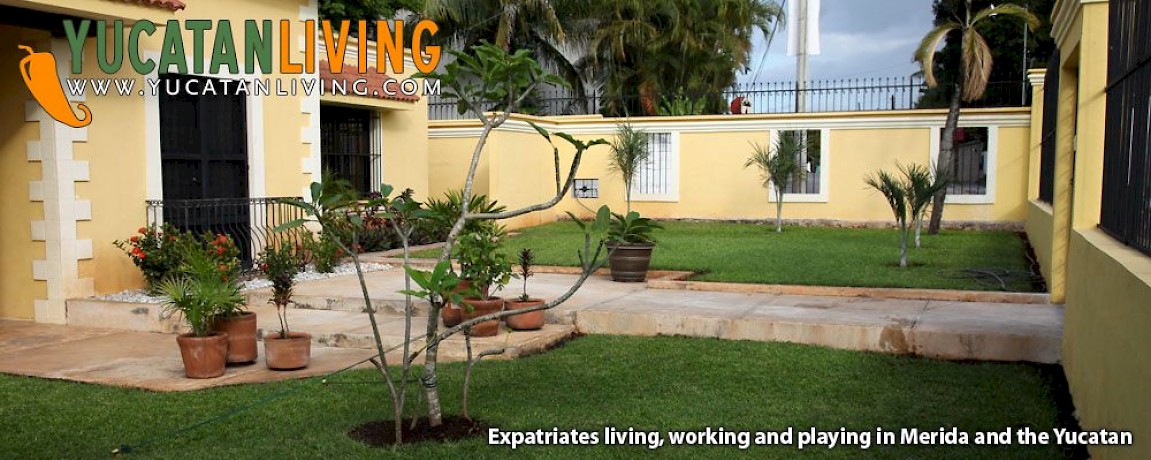



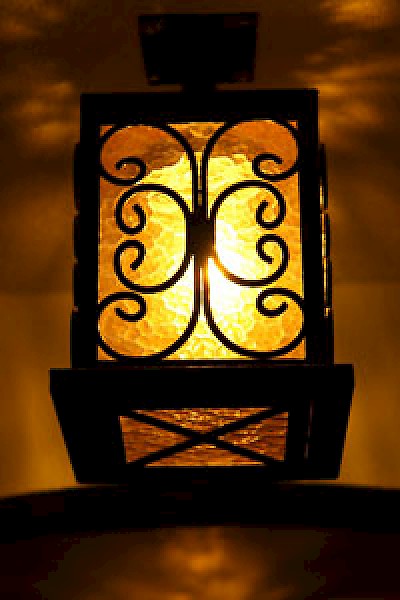
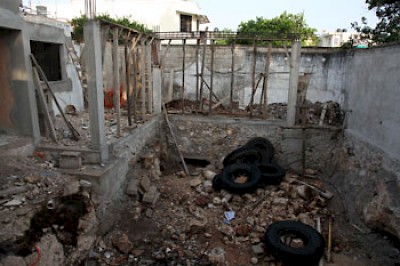
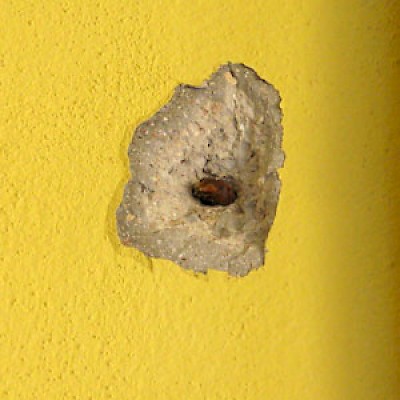
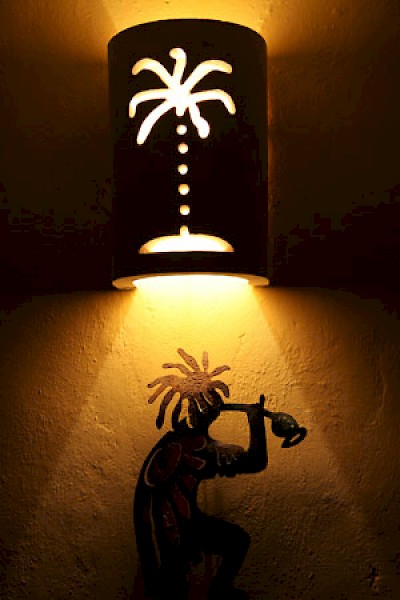
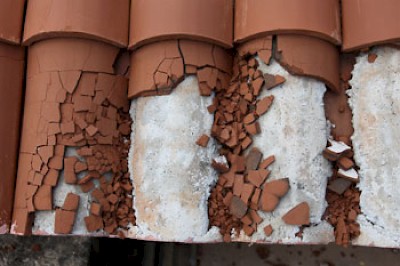
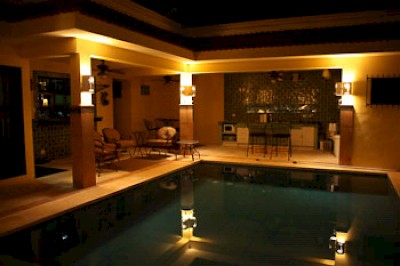

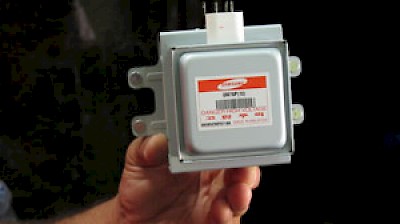
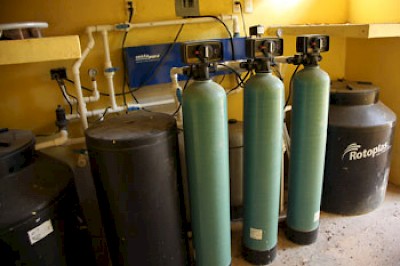
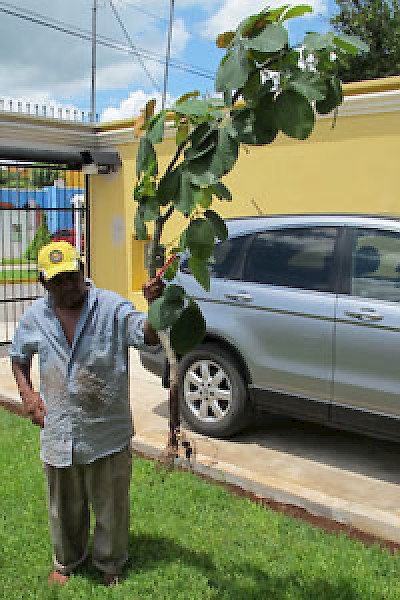
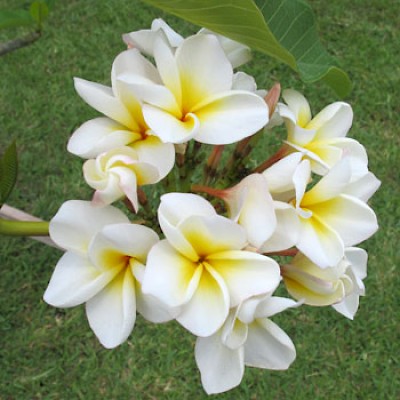
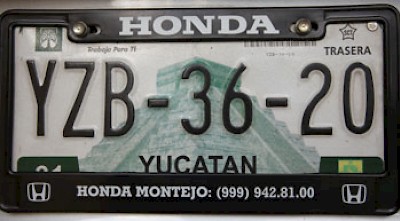
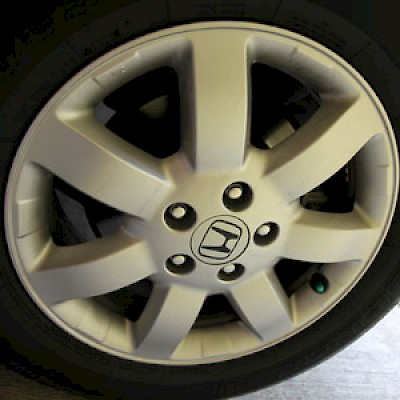

Comments
Deborah Wilson 9 years ago
My husband and I built a wonderful home in Chelem on the water. Unfortunately, my husband died 6 months afterwards. I ended up moving back to the US. I loved the Yucatan. We had a wonderful builder and our realtor friend, which I would highly recommend (Veronica Torres) took us by the hand and showed us the ropes. It is very cheap to build there verses the US. We shipped all furnishings to the Yucatan from the US. It is expensive to buy there in Mexico. We even bought our appliances in US and shipped them also. At least I knew what I wanted and I had that when the house was finished. I highly recommend shipping. We also had very high ceilings in the two story home. This made the heat not be so bad. I love french doors. Didn't have them there even in Home Depot We had to have them built. They were very pretty with transomes above. I would be happy to answer any questions.
Reply
mary 8 years ago
Hi Deborah,
I'm so sorry to hear about your husband.
We recently bought a home in Chuburna and I was wondering what the costs are for shipping from the US and what shipping company you used.
Appreciate your advice!
Mary
Reply
John Titterington 8 years ago
My wife and I are heading to the Yucatan April 19th and are looking to buy a home or build (which I prefer) on the beach. Would like to know more about your builder and what you paid per square foot. Any help would be appreciated.
Thanks
Reply
Deborah Wilson 8 years ago
Sorry for the delay in replying. lt runs about $60/SF. I used many french doors, wrought iron staircases and had very large rooms. I bought everything here in the US since I'm not into the Mexican decor. I even sent my cabinets, vanities, d/w, ref., and had many pictures of how I wanted it to be designed. I took all lawn furniture and cushions and fabric for recovering if needed. Call me crazy but my home was absolutely beautiful. Unfortunately my husband died and I found out my only son left had cancer here in the US. I sold the house furnished with many antiques, etc. My heart was broken........ Now I'm also looking for beachfront again in Mexico. I plan to build again and this wil be my 22nd house that I've had built. I am real excited. You will love it there. Let me know if I can be of help to you. If you are looking for a good realtor, use Veronica Torres in Chelem. She took us to all the places for paper work, etc. She stood with us through everything. shes honest and knows the most reputable attornies, etc.
Good Luck
Debbie
Frost 12 years ago
Thank you for the extensive information. Very valuable
Reply
DJaaay 13 years ago
You lucky expats. I just checked the exchange rate and it is 13.20 to 1 US! Loved your article. Thanks
Reply
Cat 13 years ago
Hello, Byron. I live in Puerto Morelos Q Roo. Please, please tell me what kind of floor fan you are using and where you bought it. I have not been able to find the perfect fan. Thanks.
Reply
Working Gringos 13 years ago
Margarita, MexPack on this page:
http://www.yucatanexpatriateservices.com/affiliates
specializes in moving people to and from Mexico.
Reply
Margarita 13 years ago
Thank you for writing this article. My husband and I just purchased property in Sisal and are very excited about our impending move. We have always known that we wanted to retire in Mexico and over the last 25+ years we have looked and many locations, but when we first visited Merida and its surrounding areas we knew this was the place and three visits later we purchased. I was wondering if you can send me the information regarding your mover as we are also planning on taking some of our own belongings and planning to purchase the rest in the region.
Reply
Diana 13 years ago
Hi, you're article was really interesting for us. We are seriously thinking of retiring in Mexico and have been to a number of places on both coasts and the Baha. Certainly not as many as you have but enough to know that we love the people, their culture, friendliness and, considering we live in British Columbia Canada the weather is definitely a plus. We have friends in Merida and we really love it there but the weather is very warm and we prefer more green. There is so little on the internet on rentalsor real estate for Valladolid that we are hoping you may have more information or could let us know where we can get some. From what we have found it is like a mini Merida with some features that might suit us better. We are interested in being involved with the local community and doing volunteer Thank you. Diana & Don
Reply
RJ 13 years ago
Shouldn't be much debate abount reverse osmosis. It is only affordable for low flow rates such as an auxiliary faucet just for drinking water--probably 5 - 10 gallons per day max, unless you are willing to pay substantially more for a higher capacity system. RO uses and disposes of 1 - 3 gallons of water for every gallon that it purifies.
The "waste" water is pretty close to your tap water, so if you like, it can be captured and used for toilets, washing, the garden, and so forth, but if you are using just 5 - 10 gallons per day from a normal drinking/cooking water faucet, the cost of reovery may not make it worth the extra expense.
Reply
(0 to 11 comments)Next »